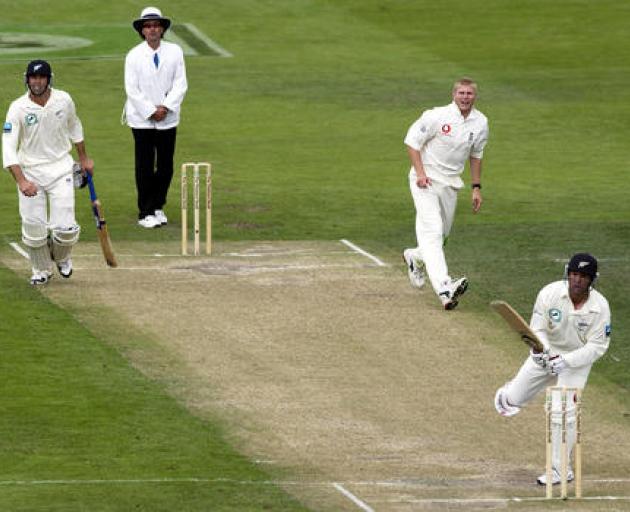
Yet during the summer of 2000-2001, the ground-breaking wicket tray encased 22 yards of New Zealand-made test cricket history.
As the demolition and regeneration of Christchurch’s hallowed sporting turf continues, a fortnight ago workers had no idea what they had unearthed when digging out the back of the earthquake-ravaged stadium.
“It was buried, tucked in right on the south boundary on Lismore St,” said Taggart Earthmoving Ltd’s demolitions manager Mike Smart.
The relevance of the framing was only apparent when cricket buff Richard Gibbs, Christchurch City Council project manager for Lancaster Park, made a site visit.

“It will get cut up with our steel shear and it’ll be recycled. From there it’ll be processed and shipped overseas to be smelted down,” Smart said.
The drop-in pitch debuted in the second test of the series against Pakistan from March 15, 2001, a dreary draw memorable for double tons to player of the match Mathew Sinclair (204*) and Mohammad Yousuf (203).
Criticised for favouring strokemakers throughout, only 19 wickets fell in five days.
Opener Mark Richardson created an unwanted footnote when he was the first victim when bowled by Saqlain Mushtaq for 46.
“It got a bit of a bad rap because there was nothing in it, it was too flat,” remembered then groundsman Chris Lewis.
However, 12 months later the pitch played its part in an enthralling test with England, as Nathan Astle slammed the fastest-ever test double ton from 153 balls.

Lewis has fonder memories of that encounter after producing a green top for Chris Cairns, Ian Butler and debutant Chris Drum.
“There was lots of grass, lots of movement and carry. It had all the excitement and drama . . . it was an all-round great test match,” Lewis said.
New Zealand also lost to Australia by nine wickets in 2005 and the following summer the last test was staged at the ground, a five-wicket win over Sri Lanka.
Lewis was proud the drop-in pitch was produced locally, a portable wicket used in the series opener at Eden Park was imported from Australia.
Even so, Lewis doubts whether a length of the wicket tray frame should be preserved at the national cricket museum.
“I wouldn’t think so,” he said.
“Not many people would give a toss.”













